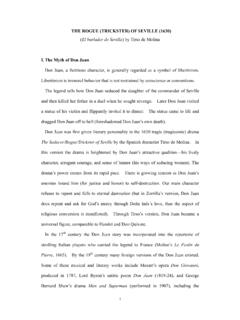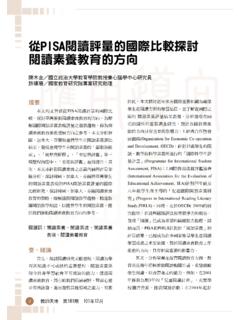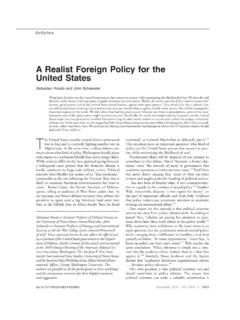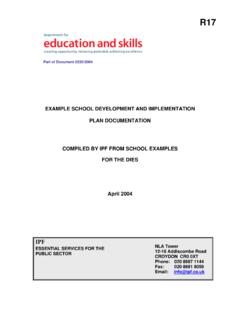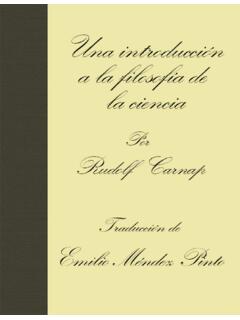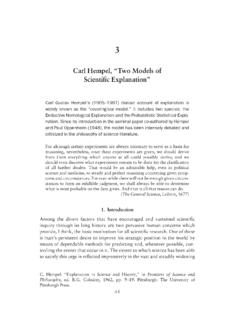Transcription of Conceptual Models and the Cuban Missile Crisis - NCCU
1 Conceptual Models and the Cuban Missile CrisisGraham T. AllisonThe American Political Science Review, Volume 63, Issue 3 (Sep., 1969), use of the JSTOR database indicates your acceptance of JSTOR s Terms and Conditions of copy ofJSTOR s Terms and Conditions of Use is available at , by contacting JSTORat or by calling JSTOR at (888)388-3574, (734)998-9101 or (FAX) (734)998-9113. No partof a JSTOR transmission may be copied, downloaded, stored, further transmitted, transferred, distributed, altered, orotherwise used, in any form or by any means, except: (1) one stored electronic and one paper copy of any articlesolely for your personal, non-commercial use, or (2) with prior written permission of JSTOR and the publisher ofthe article or other copy of any part of a JSTOR transmission must contain the same copyright notice that appears on the screen orprinted page of such American Political Science Review is published by American Political Science Association.
2 Please contactthe publisher for further permissions regarding the use of this work. Publisher contact information may be obtainedat American Political Science Review01969 American Political Science AssociationJSTOR and the JSTOR logo are trademarks of JSTOR, and are Registered in the Patent and Trademark more information on JSTOR contact Sep 3 13:14:45 2001 The AmericanPolitical Science ReviewVOL. LXIIISEPTEMBER, 1969NO. 3 Conceptual Models AND THE Cuban Missile Crisis GRAHAM T. ALLISONH arvard UniversityThe Cuban Missile Crisis is a seminal thirteen davs of October 1962, there was ahigher probability that more human lives wouldend suddenly than ever before in history. Hadthe worst occurred, the death of 100 millionAmericans, over 100 million Russians, and mil-lions of Europeans as well would make previousnatural calamities and inhumanities appear in-significant.
3 Given the probability of disaster-which President Kennedy estimated as be-tween 1 out of 3 and even -our escape seemsawesome? This event symbolizes a central, ifonly partially thinkable, fact about our exis-tence. That such consequences could follow fromthe choices and actions of national governmentsobliges students of government as well as partici-pants in governance to think hard about understanding of this Crisis de-pends in part on more information and moreprobing analyses of available evidence. To con-tribute to these efforts is part of the purpose ofthis study. But here the Missile Crisis serves pri-marily as grist for a more general investigation.* A longer version of this paper was presented atthe Annual Meeting of the American Political Sci-ence Association, September, 1968 (reproduced bythe Rand Corporation, P-3919).
4 The paper is partof a larger study, scheduled for publication in 1969under the title Bureaucracy and Policy: Concep-tual Modek and the Cuban Missile &isis. For sup-port in various stages of this work I am indebtedto the Institute of Politics in the John F. KennedySchool of Government and the Center for Inter-national Affairs, both at Harvard University, theRand Corporation, and the Council on ForeignRelations. For critical stimulation and advice I amespecially grateful to Richard E. Neustadt, ThomasC. &helling, Andrew W. Marshall, and ElisabethK. Allison. Theodore Sorensen, h ennedy (New York, 19651,p. studv proceeds from the premise thatmarked improvement in our understanding ofsuch events depends critically on more self-con-sciousness about what observers bring to theanalysis.)
5 What each analyst sees and judges tobe important is a function not only of the evi-dence about what happened but also of the Conceptual lenses through which he looks atthe evidence. The principarl purpose of this essayis to explore some of the fundamental assump-tions and categories employed by analysts inthinking about problems of governmental be-havior, especially in foreign and military general argument can be summarized inthree propositions :1. Analysts think about problems of foreign andmilitary policy in terms of largely implicit concep-tual Models that have significant consequences forthe content of their thought?Though the present. product of foreign policyanalysis is neither systematic nor powerful, ifone carefully examines explanations produced byanalysts, a number of fundamental produced by particularanalysts display quite regular, predictable fea-tures.
6 This predictability suggests a substruc-ture. These regularities reflect an analyst s as-sumptions about the of puzzles, thecategories in which problems should be consid-ered, the types of evidence that are relevant,and the determinants of occurrences. The firstproposition is that clusters of such related as-sumptions constitute basic frames of referenceor Conceptual Models in terms of which analysts*In attempting to understand problems of for-eign affairs, analysts engage in a number of related,but logically separable enterprises : (a) description,(b) explanation, (c) prediction, (d) evaluation, and(e) recommendation. This focuses primarilyon explanat ion (and by implication, prediction).689690 THE AMERICAN POLITICAL SCIENCE REVIEWVOL.
7 63both ask and answer the questions: What hap-pened? Why did the event happen? What willhappen? Such assumptions are central to theactivities of explanation and prediction, for inattempting to explain a particular event, the an-alyst cannot simply describe the full state ofthe world leading up to that event. The logic ofexplanation requires that he single out the rele-vant, important determinants of the Moreover, as the logic of predictionunderscores, the analyst must summarize thevarious determinants as they bear on the eventin Models both fix themesh of the nets that the analyst drags throughtlhe material in order to explain a particular ac-tion or decision and direct him to cast his net inselect ponds, at certain depths, in order to catchthe fish he is Most analysts explain (and predict) the be-havior of national governments in terms of variousforms of one basic Conceptual model, here entitledthe Rational Policy Model (Model I)
8 7In terms of this Conceptual model, analystsatt,empt to understand happenings as the moreor less purposive acts of unified national govern-ments. For these analysts, the point of an expla-nation is to show how the nation or government In arguing that explanations proceed in termsof implicit Conceptual Models , this essay makes noclaim that foreign policy analysts have developedany satisfactory, empirically tested theory. In thisessay, the use of the term model without quali-fiers should be read Conceptual scheme. 4 For the purpose of this argument we shall ac-cept carl G. hempel s characterization of the logicof explanation: an explanation answers the ques-tion, 9%~ did the explanadum-phenomenon oc-cur?
9 By showing that the phenomenon resultedfrom particular circumstances, specified in C1, CL,Ck, in accordance with laws L,, 212, .. Lr. Bypbmting this out, the argument shows that, giventhe particular circumstances and the laws in ques-tion, the occurrence of the phenomenon was to beeqected; and it is in this sense that the explana-tion enables us to understand why the phenome-non occurred. Aspects of Scientific Explanation(New York, 1965), p. 337. While various patternsof explanation can be distinguished, uiz., ErnesthTagel, The Structure of Science: Problems in thetigic of Scientific Explanation, New York, 1961),satisfactory scientific explanations exhibit this basiclogic. Consequently prediction is the converse ofexplanation.
10 Earlier drafts of this argument have arousedheated arguments concerning proper names forthese Models . To choose names from ordinary lan-guage is to court confusion, as well as it is best to think of these Models as I,II, and have chosen the action in question, giventhe strategic problem that it faced. For example,in confronting the problem posed by the Sovietinstallation of missiles in Cuba, rational policymodel analysts attempt to show how this was areasonable act from the point of view of the So-viet Union, given Soviet strategic Two alternative Conceptual Models , here la-beled an Organizational Process Model (Model II)and a Bureaucratic Politics Model (Model III>provide a base for improved explanation and the standard frame of reference hasproved useful for many purposes, there is pow-erful evidence that it must be supplemented, ifnot supplanted, by frames of reference whichfocus upon the large organizations and politicalactors involved in the policy process.)
